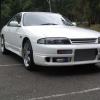should i buy a turbo or keep my NA
Announcements
-
Similar Content
-
Latest Posts
-
Not sure the US can import anything other than the C34 Stagea's, but if you can and you need to to tow, DO NOT under any circumstances get an M35 Stagea. If it is just as a family car and your country/state allows it, absolutely and definitely get an M35 (3.5L if possible as it is effectively a 350Z) over a C34.
-
Punch your VIN (nm35-xxxxxx) into Amayama.com You can see everything there quite easily.
-
Thanks for that, I'll check it all out. I can always do the brakes last anyway if its a problem. The 16's are super cool, if they do fit I'll cruise around with them for a bit.









Recommended Posts
Create an account or sign in to comment
You need to be a member in order to leave a comment
Create an account
Sign up for a new account in our community. It's easy!
Register a new accountSign in
Already have an account? Sign in here.
Sign In Now